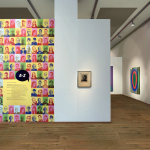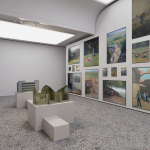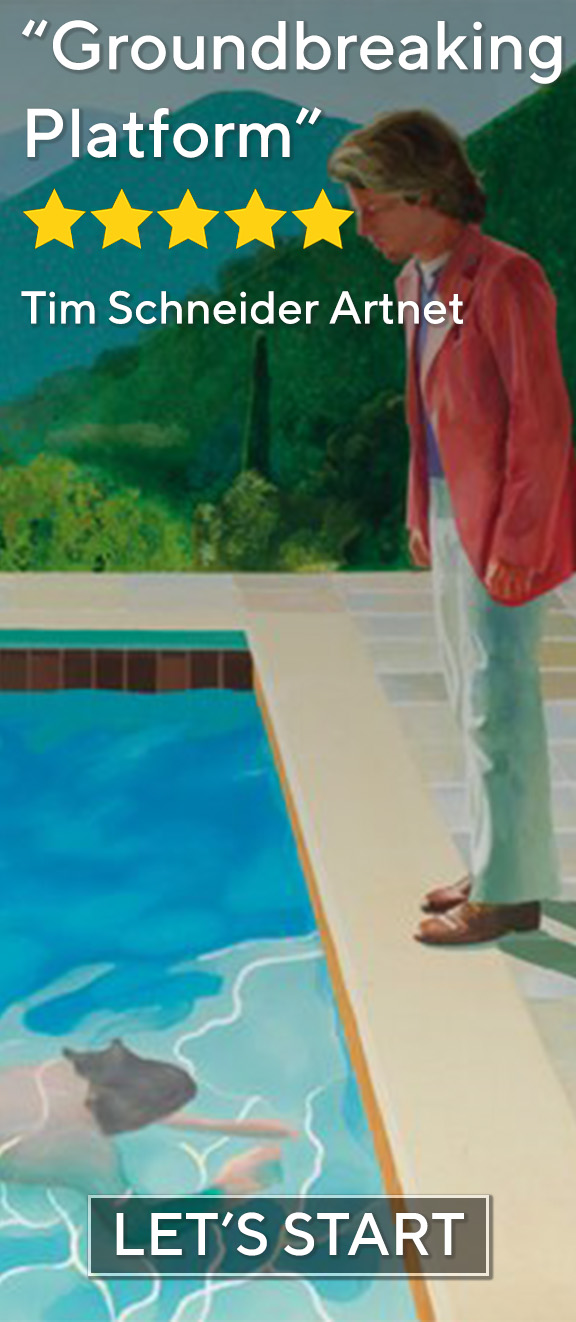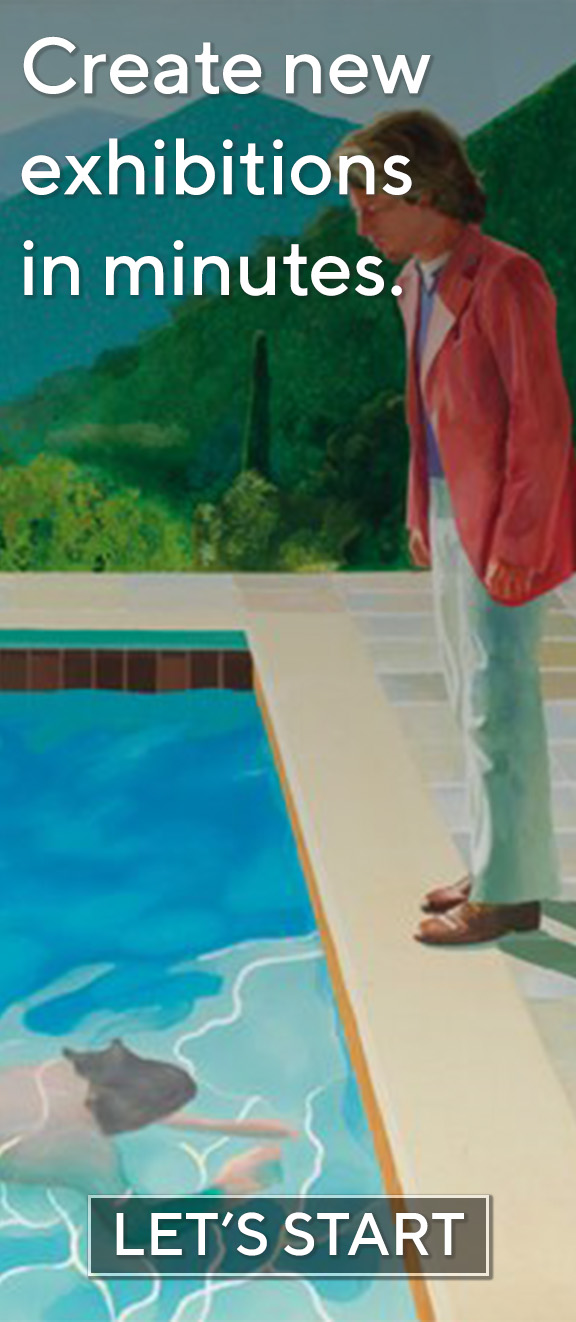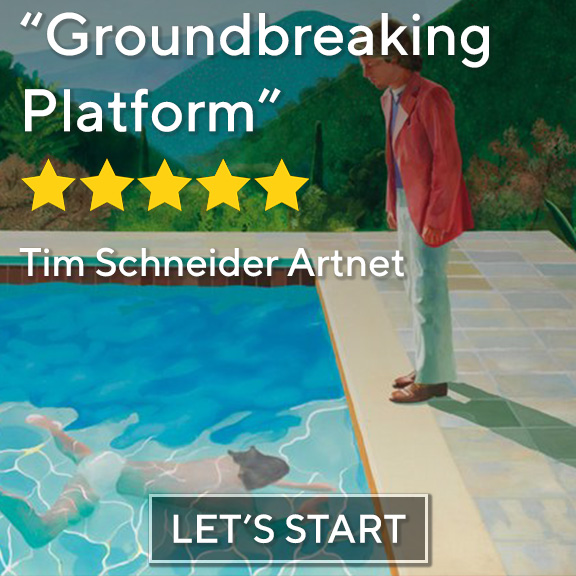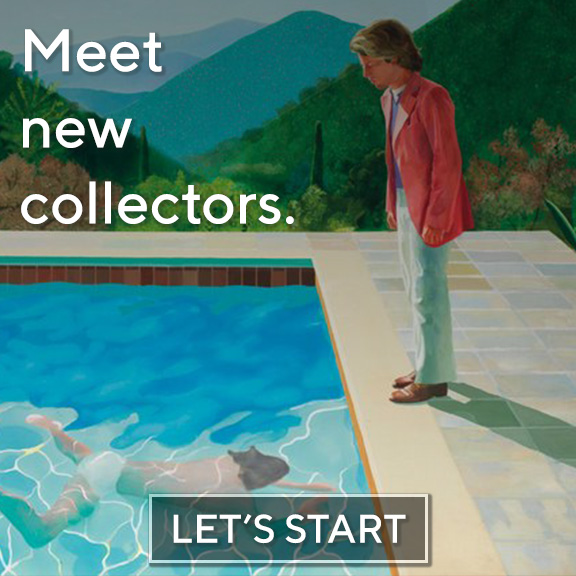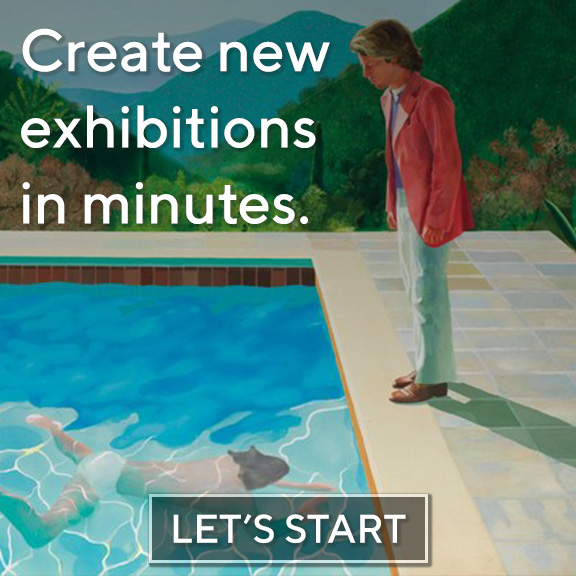Metropolitan
New York City, USA
David Hockney
This time in our series of reviews we visit David Hockney’s digitized exhibition through a three-dimensional model created by Walter’s Cube. This technological innovation lets the visitors enjoy the artworks in a proportionally scaled digital twinspace in real time, where walking around and interacting grows into an immersive experience thanks to the Online Viewing Room.
David Hockney has been known as the bridge between illusion and realism for decades now, since his almost life-sized acrylic portraits serve as a meeting ground for a style of depiction that’s close to naturalism and a characteristic tendency that flattens surfaces to the point where it could be called abstraction. The Metropolitan’s retrospective exhibition – laconicly yet tellingly only titled David Hockney – presents paintings from the very beginning of the artist’s career when he experimented with expressionism in England, from the early years of his Los Angeles residency when he started making fun of the machismo of American Abstract Expressionism (action painting wasn’t that far behind, which sometimes resembled a physical exercise in terms of the creative process with its gestural abstraction: it wasn’t a style frequented by women), and from Hockney’s more recent days of jewel-toned landscapes influenced by Van Gogh.
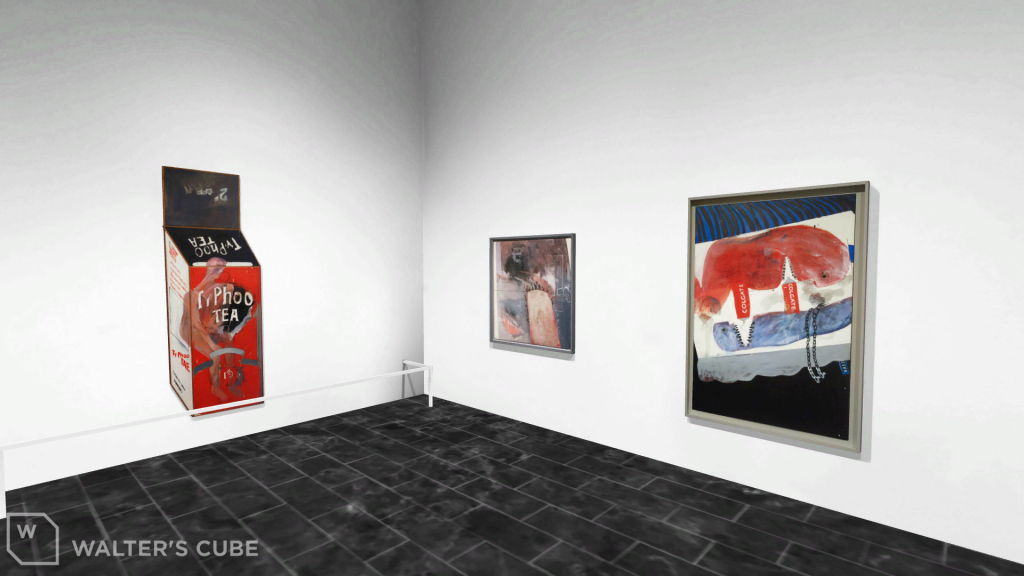
Available on the Online Viewing Room
Naming a lifetime exhibition simply after the artist could mean two things. One, the artist is a titan in the artworld and needs no introduction whatsoever, since his name is enough to bring the viewers to the gallery. Two, the oeuvre is so diverse it couldn’t possibly be summarized in a few words. Although Hockney dabbled in many media over the years, such as painting, drawing, photography, prints, and lately different digital technologies, it’s clearly the former case. We are confident in saying this because his play on real and not real could be summed up as visual curiosity, which might sound like retinal art, but should not be identified as.
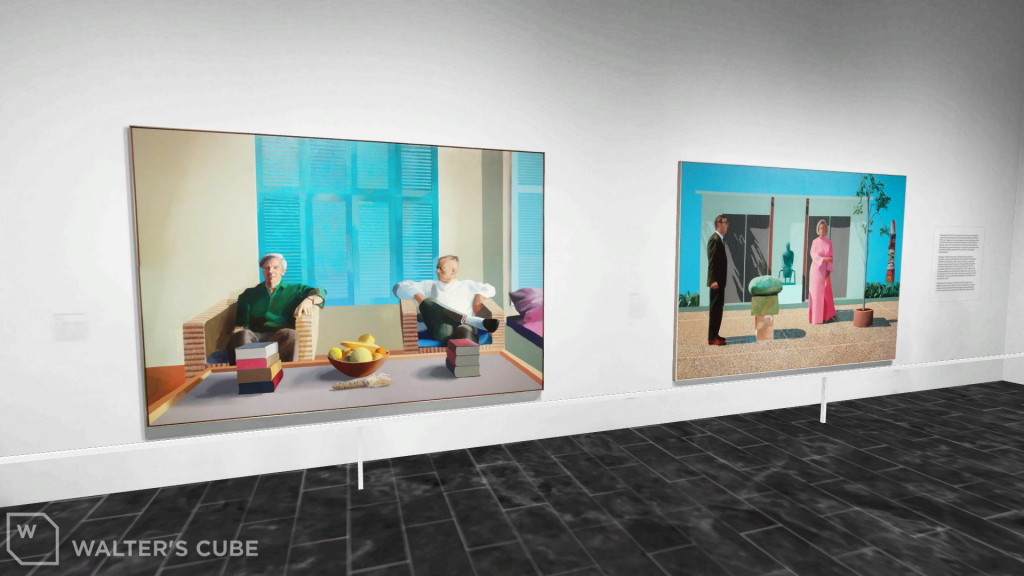
Available on the Online Viewing Room
To prove this statement we advise everyone to take a look at the infamous Hockney-Falco thesis: even though art historians never collectively accepted their notion that Western art since the Renaissance achieved realism and accuracy due to optical instruments rather than solely due to artistic skills, it speaks volumes about how Hockney imagines two-dimensional representation.
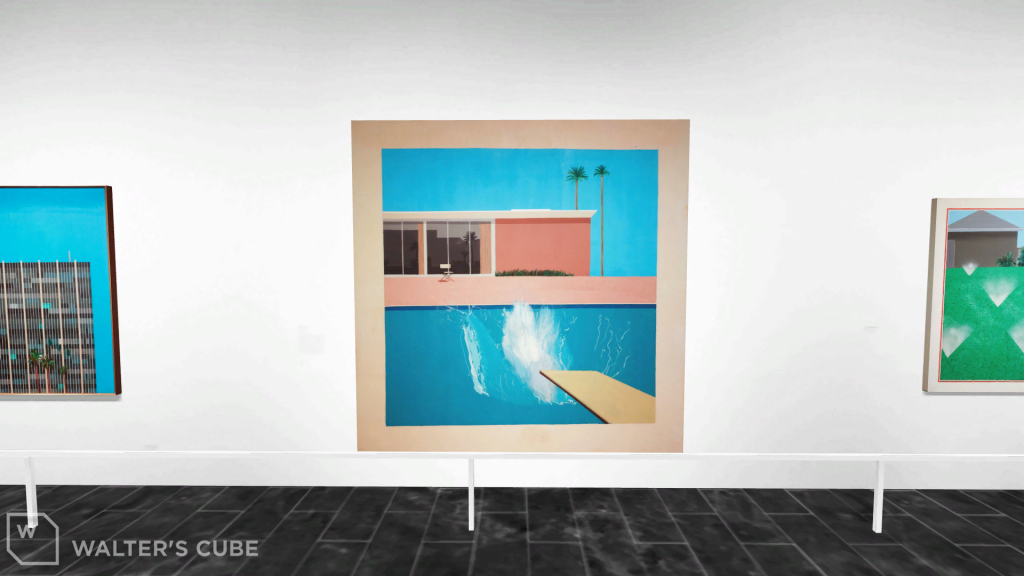
Available on the Online Viewing Room
On Mr and Mrs Clark and Percy this means portraying the couple after many sketches, setting them in naturalistic poses taken from the grand masters with a little twist (that would be the realistic part), while that pose is symbolic of their relationship (that’s his fantasy running free). Even prophetic, as the painting foreshadows the infidelity and divorce yet to come with the cat and the distance between the couple. Seeing into the future is just one way Hockney puts time on canvas: on Portrait of an Artist (Pool with Two Figures) he confronts himself with lost love and past lovers in the form of his partner looking for new partners.
As of the volatile present, A Bigger Splash combines Hockney’s expectations of California with its reality, the minimalist geometry of the building with the limited palette of sky, water, and brick, the permanency of a house with the fleetness of a splash. Despite of having synaesthetic associations, the irony of portraying passing time is not lost on Hockney: “… that’s what it’s commenting on. The stillness of an image. … Most of the painting was spent on the splash and the splash lasts two seconds and the building is permanent there. That’s what it’s about actually. You have to look in at the details.”





